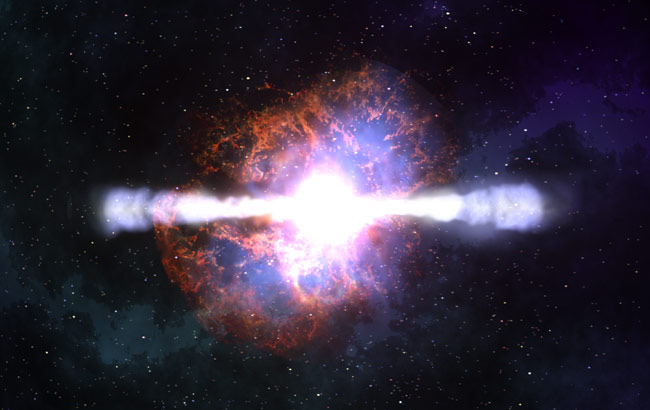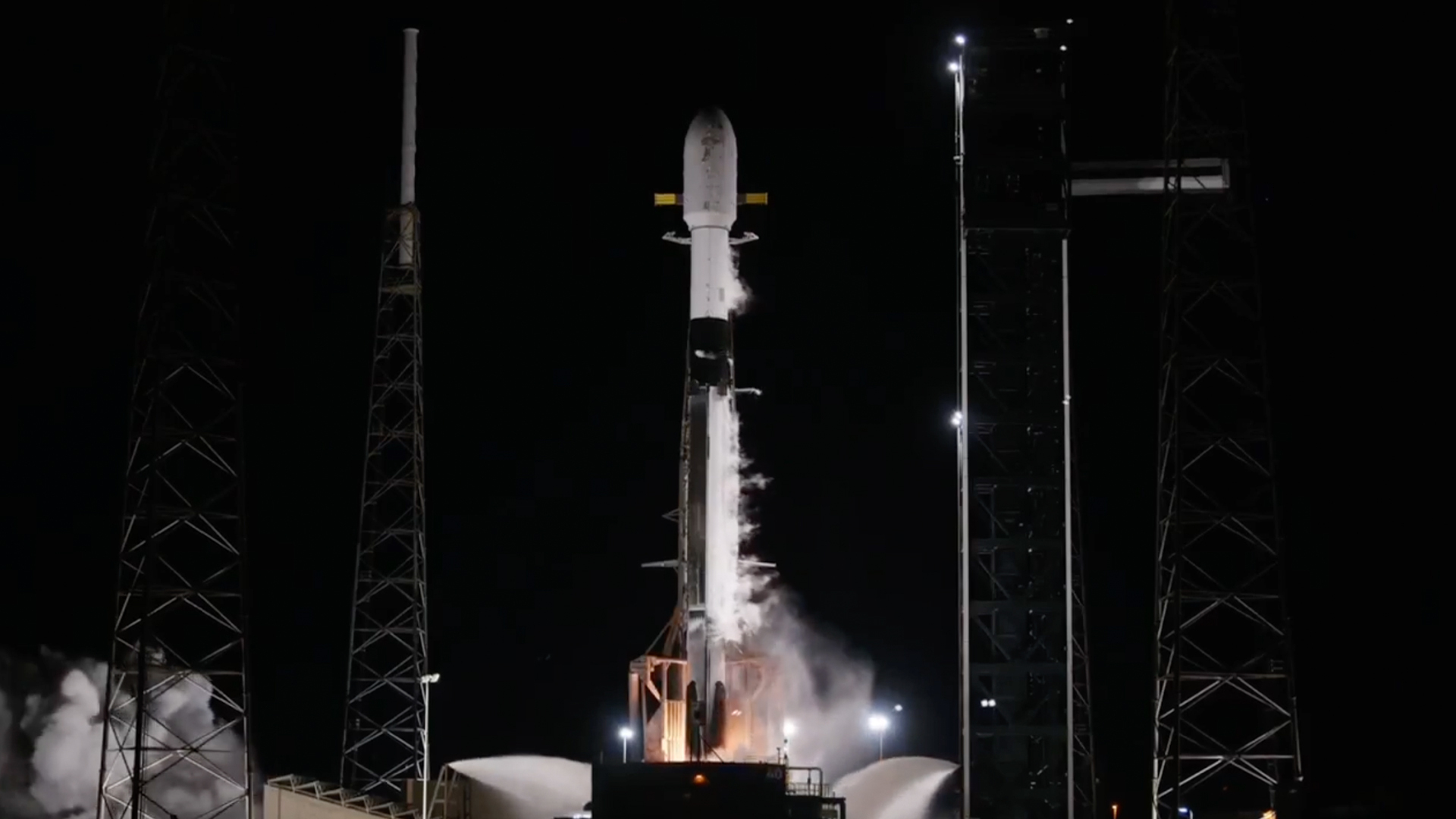Automatic Telescope Spots Light-Speed Explosions

Some dyingstars smolder into darkness while others quickly shed their coat of hot gases.But some go out with a bang, propelling their remains through the cosmos at morethan 99.9997 percent of the speed of light--the maximum speed limit in theuniverse.
Using arobotic telescope at the European Space Organization?s La Silla Observatory in Chile, called the Rapid Eye Mount (REM) telescope, astronomers have measuredonce-theoretical speeds of the explosions known as gamma-ray bursts forthe first time.
?This isvery exciting,? said Stan Woosley, an University of California astronomer andastrophysicist who was not involved in the research. Woosley said the energyfound in the bursts ?strain the models? dictating how fastmatter can go.
Thefindings are detailed in the latest issue of the journal Astronomy &Astrophysics.
Rapidobservations
The burstslast only seconds to several minutes and their intense energy is at very short wavelengthswe can't see, so timing and an automated recording method is critical in orderto catch one.
EmilioMolinari, an astronomer with the Brera Astronomical Observatory in Italy and co-author of the study, said the observation was possible thanks to quick,automated observations of major galactic catastrophes.
Breaking space news, the latest updates on rocket launches, skywatching events and more!
?We can nowstudy in great detail the very first moments following these cosmiccatastrophes,? Molinari said.
In twoseparate events, on April 18 and June 7 of last year, NASA?s Swiftsatellite detected a bright gamma-ray burst and automatically notified thesmall REM telescope. Just 40 seconds after each explosion, the robotic observerswung around and aimed its lens at the event. Although the initial explosionswere invisible at first, the intense energy heated up nearby gas which could beseen in near-infrared light by the telescope.
Warpspeed
By studyingthe changing brightness of both bursts, the astronomers measured how fast matter was careening away from the bursts. Astrophysicists usea special system to peg the speed of matter, called the Lorentz factor--thehigher the number, the closer to the speed oflight.
In the caseof both bursts, the Lorentz factor was 400--an unprecedented observation untilnow.
StefanoCovino, another co-author of the study and astronomer at the Brera AstronomicalObservatory, said the speed wasn?t the only impressing figure.
"Whilesingle particles ? can be accelerated to still larger velocities, the presentcases are the equivalent of about 200 times the mass of the Earth acquiringthis incredible speed,? Covino said.
"Youcertainly wouldn't like to be in the way," said Susanna Vergani, anotherteam member.
Now thatthe team has made the striking observations, they are trying to find some wayto explain them. "The next question is which kind of 'engine' canaccelerate matter to such enormous speeds," Covino said.
- Video: When Stars Explode
- Gallery: The Best Galactic Images
- Video: Hypernovas: Thermonuclear Flashbulb
Dave Mosher is currently a public relations executive at AST SpaceMobile, which aims to bring mobile broadband internet access to the half of humanity that currently lacks it. Before joining AST SpaceMobile, he was a senior correspondent at Insider and the online director at Popular Science. He has written for several news outlets in addition to Live Science and Space.com, including: Wired.com, National Geographic News, Scientific American, Simons Foundation and Discover Magazine.
